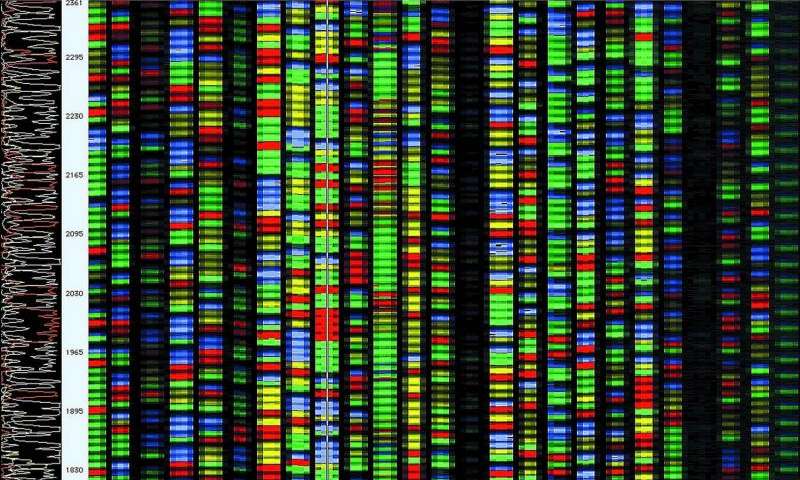Sequencing this new DNA standard reference material enables medical laboratories to verify if their DNA test results are accurate
To reduce the variability in genetic test results that has been observed across different clinical laboratories and pathology groups, the National Institute for Standards and Technology (NIST) has introduced a new standard DNA reference. This is another step forward to improve transparency in the quality and accuracy of genetic test results produced by medical laboratories in the United States and abroad.
Even as scientists continue to identify genetic mutations that could cause various cancers and other diseases, such as Alzheimer’s and cystic fibrous, studies have demonstrated that DNA test results from the same specimen can vary depending on which medical laboratory performs the whole-genome sequencing analysis. This is partly due to variances in the technology, chemicals and processes used for the testing. Therefore, ensuring consistently reliable test results has been difficult, which could lead to inaccurate or missed diagnoses.
That is why a new standard DNA reference material developed by the National Institute for Standards and Technology has the potential to help DNA sequencing facilities to verify if their DNA test results are accurate. The new reference material, NIST RM 8398, was designed to improve the accuracy of diagnostic laboratories that analyze DNA using “next-generation sequencing” (NGS) technology.
Accuracy in DNA Sequencing Required for ‘Precision Medicine’ Success
“If you send a sample of blood or a tumor biopsy to different genetic testing laboratories, you can get different results,” stated Marc Salit, Ph.D., Group Leader for the NIST Genome Measurement Group in a New York Times report.
To expand the scope and accuracy of the technology used in the diagnosis and treatment of disease, the National Institutes of Health, recently launched the “Precision Medicine Initiative,” which Dark Daily covered in March (see “Obama’s $215 Million Precision Medicine Initiative: Will Congress Fund It and Can It Advance Genetic Testing and the Value of Clinical Laboratory Services?, March 23, 2015).
This NIH initiative supports the research and development of treatments customized to genetic and molecular diagnoses, pointed out the New York Times article. It further noted that this DNA reference material also gives regulators a new tool to assess the accuracy of DNA tests.

Marc Salit, Ph.D., is Group Leader for the NIST Genome Measurement Group. He told the New York Times that though individual genetic testing laboratories might overall be in agreement, they also could have significant differences. “Now, for the first time, we have a standard to check the reliability and quality of gene sequencing,” he said. (Picture copyright LinkedIn.)
Inaccurate DNA Sequencing by Medical Laboratories Can Cause Patients Harm
Francis S. Collins, M.D., Ph.D., Director of the National Institutes of Health said, for example, that an oncologist chooses the chemotherapy drug most likely to work based on the results of a DNA sequencing scan.
However, in addressing this use of DNA sequencing results, Jeffrey E. Shuren, M.D., J.D., Director of the FDA Center for Devices and Radiological Health, told the New York Times, “An inaccurate genome-sequencing test can lead to patients receiving the wrong diagnosis, the wrong treatment, or no treatment at all, even when effective therapy is available.”
A medical laboratory, therefore, might use the NIST test samples to gain insurer confidence in the accuracy and value of its DNA testing capabilities. This may make the health insurer more likely to pay for genome sequencing, which costs about $5,000 each, noted the New York Times report.
Elizabeth A. Mansfield, Ph.D., is a geneticist who supervises the FDA’s Personalized Medicine (AKA, Precision Medicine) program. She suggested that the reference material could lead to “better instruments and better tests,” and as a result, “health plans may be more willing to pay for such tests.”
Standard Genetic Reference Material Result of Public-Private Initiative
NIST RM 8398 was created by a partnership of NIST and the Genome in a Bottle Consortium, a scientific collaboration of stakeholders from industry, academia and federal agencies. NIST and FDA scientists organized the collaborative effort to provide the technical benchmarks, including reference standards, methods and data, required to provide widespread clinical applications of whole-genome sequencing and science-based regulatory oversight of this technology by the FDA, noted the NIST press release.

The image above is the final result of a DNA sequence, with each color representing one of the four base chemicals—(adenine, guanine, cytosine and thymine—comprising DNA). NIST’s new genome reference material provides a standard for labs to use in evaluating the performance of their next-generation sequencing equipment, chemistry and data analysis involved in producing a correct genetic blueprint of a subject’s genetic characteristics. (Photo copyright Gerald Barber, Virginia Tech University/National Science Foundation.)
By sequencing the standard NIST RM 8398 specimen, clinical laboratory technologists can compare their lab’s results with the NIST’s correct result. This would allow them to evaluate the performance of the lab’s next-generation sequencing equipment, as well as the chemistry and data analysis involved in producing a correct genetic blueprint of a subject’s unique genetic characteristics. The 10 microgram-vial of standard DNA material, which is from a Utah woman of European ancestry, is available on the NIST website for $450.
—Patricia Kirk
Related Information:
“Measuring Stick” Standard for Gene Sequencing Now Available from NIST
U.S. Introduces New DNA Standard for Ensuring Accuracy of Genetic Tests
NIST, Genome in a Bottle Release First Reference Material for Assessing Genome Sequencing
FDA Allows Marketing of Four “Next-Generation” Gene Sequencing Devices



